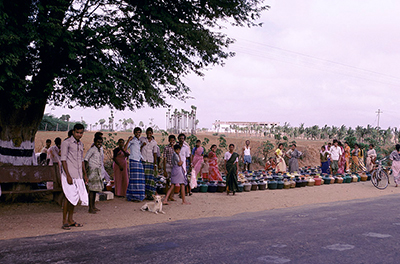Improving Livelihoods through Investment in Rural Development, Infrastructure, and Social Services

Summary
Even while India is enjoying unprecedented economic growth, as one of the most populous countries in the world a vast number of its citizens still live below the poverty line, especially in rural areas. The government realized that dealing with this problem requires adopting best international practices. Very few poverty reducing models, however, are adaptable on such a large scale. China is the one country with a comparable population and has been widely recognized for its policies to reduce absolute poverty and develop rural areas. Using funding provided by the South-South Experience Exchange Facility, the World Bank connected Indian state officials and officials from the Ministry of Rural Development with peers from China’s Poverty Reduction Commission to learn how to assist the poor through investment in rural development, infrastructure, and social services.
The Indian officials learned about managing large scale rural-to-urban migration through investments in local employment service centers. They began to introduce lessons learned in the exchange into their own rural livelihood and job-training projects. In addition, the Indians learned how to organize farmers into cooperatives and link them to local and international markets where they can sell their produce in bulk.
Beneficiaries / Participants
India has recognized that dealing with rural poverty requires innovative approaches and adopting best practices and policies. The state of Madhya Pradesh ranks among the lowest in India in social and economic development and, as a result, experiences high rates of distress labor migration. The government officials from the India Ministry of Rural Development (MRD) and the Madhya Pradesh District Poverty Initiatives Project (MPDPIP) wanted to discuss policies with developing partners to address these challenges.
In the meantime, China has been widely recognized for its policies for, and achievements in, reducing the incidence of absolute poverty and for building an infrastructure that has brought development to rural areas. China, with the help of the Word Bank’s Poor Rural Communities Development Project’s (Poverty 4) multi-sector assistance package, has improved agricultural productivity and marketing, enabling infrastructure, primary education, and public health services. Using funding provided by the South-South Experience Exchange Facility, the World Bank connected India with China to explore the problem of distress migration and gain a practical understanding of successful development models that feature investment in rural development, infrastructure, and social services.
Moving forward
The exchange improved Indian officials’ understanding of how China facilitates and addresses the problem of large scale rural-to-urban migration. As a result, the Indian delegates began to introduce a number of these practices, especially in regards to skills development and employment generation, into their own rural livelihood projects. Following the activities, the participants disseminated the lessons learned across their project teams. They also planned a follow-up visit by Chinese experts to four Indian state livelihood projects—in Tamil Nadu, Andra Pradesh, Madhya Pradesh, and Bihar—to help improve on these practices.
Building on the Chinese model, the Indian participants enhanced their skills in managing large scale rural-to-urban migration through investments in local employment service centers, information sharing on job opportunities, and job placement. They also learned how to organize farmers into cooperatives and link them to local and international markets, where they can sell their produce in bulk.
The study tour also proved an excellent opportunity for development practitioners and officials from China and India exchange ideas on how they approach rural development in the world’s most populous countries. The participants enhanced their network with contacts from a similarly fast-growing economy with large skilled and unskilled workforces.

 China
China Colombia
Colombia Denmark
Denmark India
India Indonesia
Indonesia Mexico
Mexico Russian Federation
Russian Federation Spain
Spain United Kingdom
United Kingdom